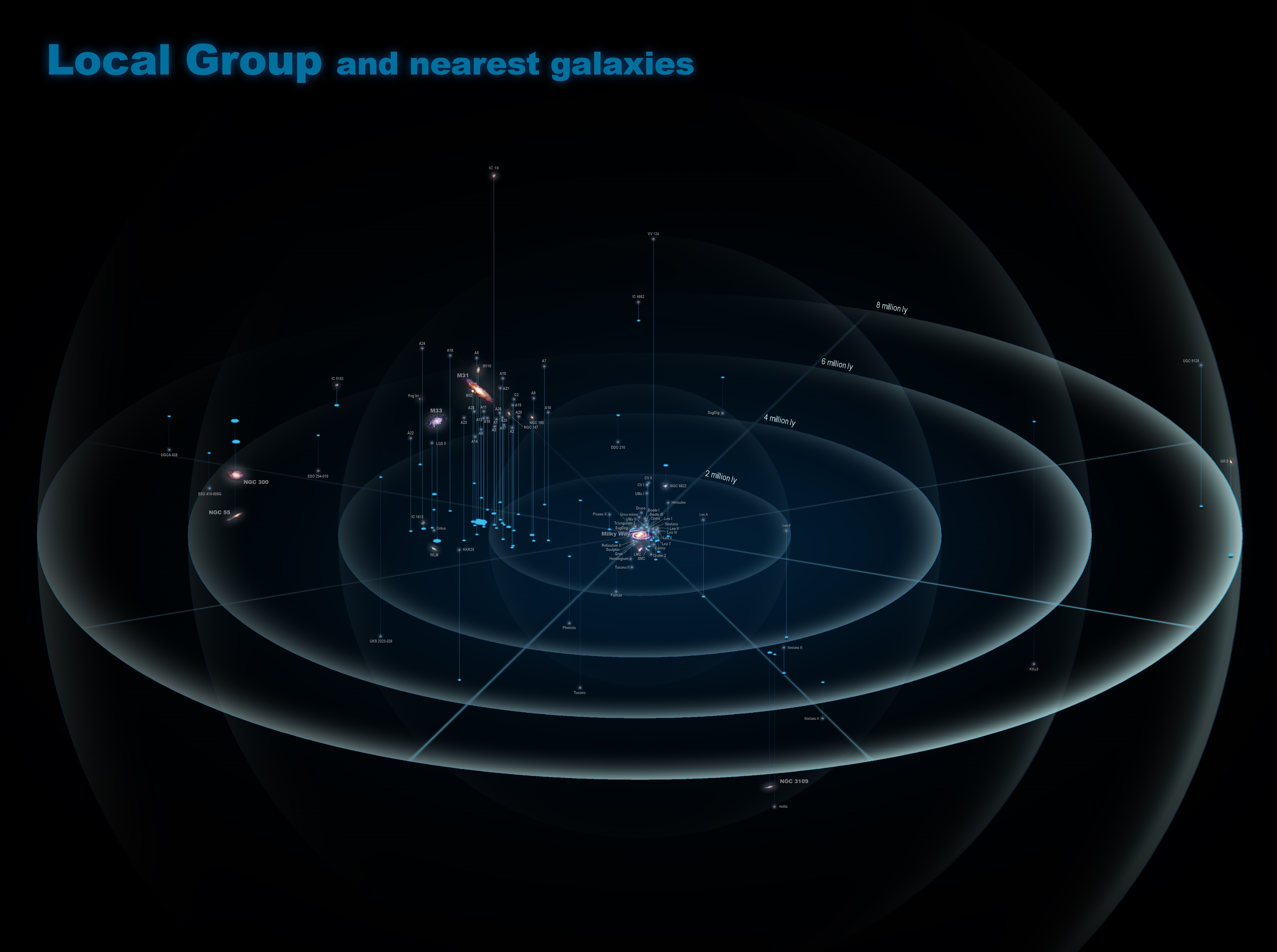
The Milky Way’s Position in the Local Group of Galaxies: A Cosmic Neighborhood
The Milky Way, our home galaxy, is not alone in the vast expanse of the universe. It is part of a cosmic community known as the Local Group of galaxies, a small gathering of galactic members that together form an intriguing astronomical ensemble. In this comprehensive article, we will embark on a journey through space to explore the Milky Way’s place within the Local Group, understanding the group’s composition, dynamics, and significance in the broader context of the cosmos.
The Local Group: A Cosmic Gathering
The Local Group is a relatively small galaxy cluster, especially when compared to colossal galaxy clusters like the Virgo Cluster or Coma Cluster. It consists of approximately 54 known galaxies, with the Milky Way and the Andromeda Galaxy (M31) being the two dominant members. Despite its modest size, the Local Group is of profound importance in the study of galaxy interactions, cosmic evolution, and the distribution of matter in the universe.
The Milky Way: Our Cosmic Address
Our galaxy, the Milky Way, is an awe-inspiring spiral galaxy with an estimated 100 to 400 billion stars. It is situated about 27,000 light-years from the galactic center, where a supermassive black hole known as Sagittarius A* resides. The Milky Way is categorized as a barred spiral galaxy, characterized by a prominent central bar-shaped structure surrounded by spiral arms. Our solar system is located within one of these spiral arms, known as the Orion Arm.
Andromeda Galaxy (M31): The Closest Neighbor
The Andromeda Galaxy (M31) is the closest spiral galaxy to the Milky Way and is often considered its sibling in the Local Group. Located approximately 2.537 million light-years away, Andromeda is the largest galaxy in the Local Group, boasting around 1 trillion stars. Over time, the Milky Way and Andromeda are on a collision course, destined to merge in a cosmic ballet that will transform both galaxies into a new, larger elliptical galaxy.
Dwarf Galaxies: The Small Residents
In addition to the Milky Way and Andromeda, the Local Group houses several dwarf galaxies. These smaller, often irregularly shaped galaxies include the Large and Small Magellanic Clouds, the Triangulum Galaxy (M33), and many others. They are gravitationally bound to the Milky Way and Andromeda, orbiting around these larger galaxies.
Group Dynamics: Gravitational Interplay
The Local Group is a gravitational dance of galaxies. The mutual gravitational attraction between its members influences their motions and orbits. Galaxies within the group can interact in various ways, including tidal interactions, where gravitational forces distort the shapes of galaxies, and even cannibalistic mergers, where larger galaxies consume smaller ones.
Cosmic Significance: Insights into Galactic Evolution
Studying the Local Group provides astronomers with a unique opportunity to explore the dynamics and evolution of galaxies within a relatively small cosmic region. By observing how galaxies interact, merge, or evolve over time, scientists gain valuable insights into the broader processes that shape the universe on a grand scale.
Future Encounters: The Milky Way and Andromeda Collision
One of the most anticipated cosmic events in the future is the collision between the Milky Way and Andromeda, predicted to occur in about 4.5 billion years. This event will reshape both galaxies, merging them into a massive elliptical galaxy, which some scientists have affectionately dubbed “Milkdromeda.”
Conclusion
The Milky Way’s position in the Local Group of galaxies is a testament to the intricate beauty and complexity of the cosmos. Our galaxy is just one member of a small galactic family, bound together by the forces of gravity and cosmic evolution. The interactions, mergers, and shared history of the galaxies in the Local Group provide invaluable insights into the fundamental processes that have shaped the universe over billions of years. As we continue to explore the mysteries of space, the Local Group remains a fascinating realm for astronomers and a reminder of the interconnectedness of celestial bodies in our vast universe.

